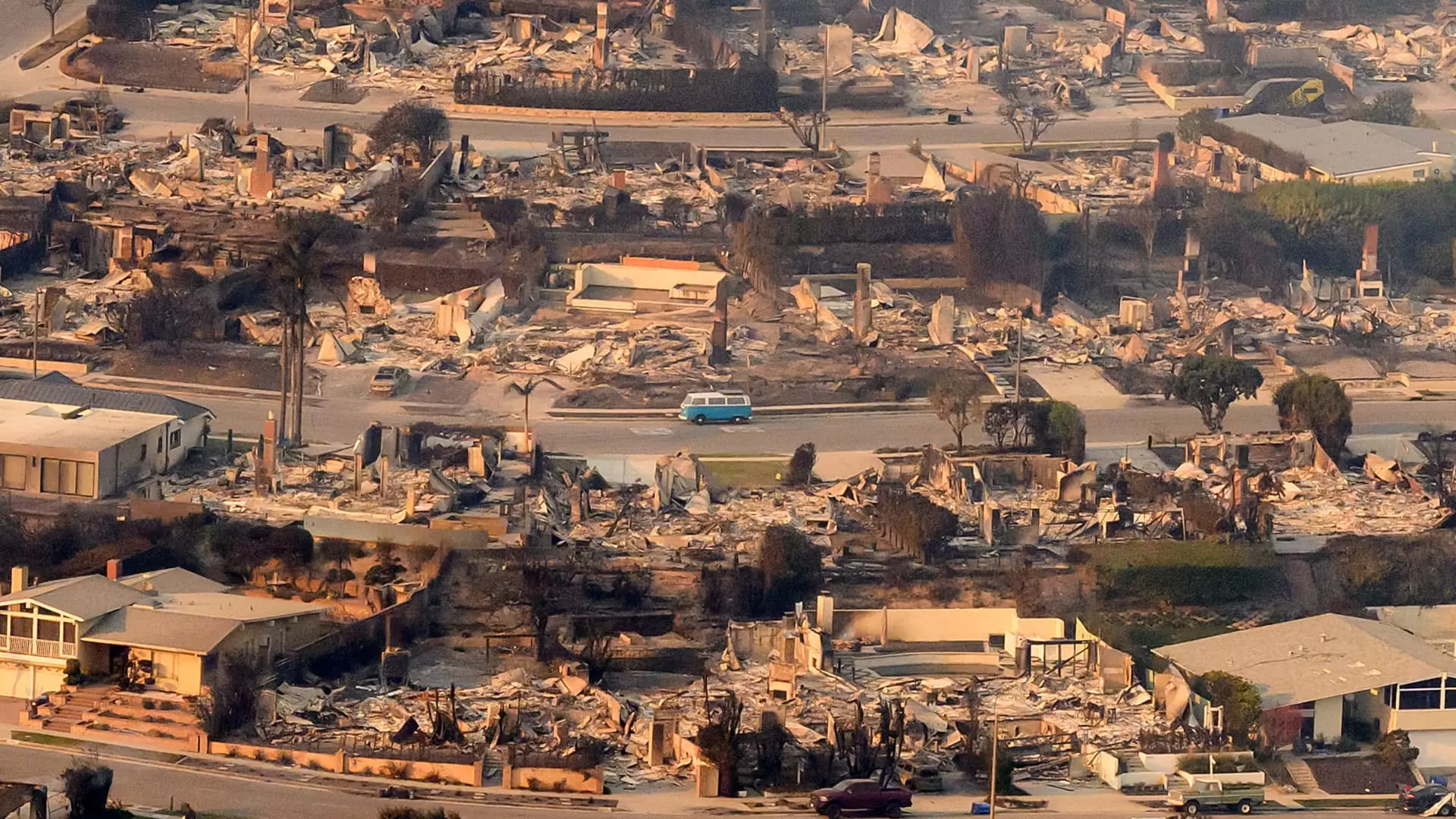The ongoing wildfires in California have wreaked havoc not only on the environment and communities but also on the financial standing of insurance companies heavily invested in the homeowners’ market. On a recent trading day, major insurers like Allstate, Chubb, AIG, and Travelers faced significant stock declines, exacerbating concerns within the financial sector. Allstate and Chubb experienced a steep drop of 4%, while AIG and Travelers saw their shares decrease by approximately 2%. Such movements marked these stocks as some of the biggest losers on the S&P 500, alarming investors amid escalating devastation.
The extent of the wildfires threatens to reshape the financial landscape for insurers. According to JPMorgan, it is estimated that insured losses could surpass $20 billion, a staggering figure that underscores the potential financial ramifications. If the fires continue to spread, these estimates may escalate even further. For context, the financial losses from this calamity could dwarf the previous record, the 2018 Camp Fire, which caused insured damages of $12.5 billion, the highest in U.S. history according to Aon. Moody’s Ratings has chimed in, providing a sobering forecast of billions of dollars in losses, particularly given the elevated property values in the impacted Los Angeles areas.
The Scale of Destruction
Among the various fires raging through California, the Palisades Fire stands out as the most devastating, consuming over 17,000 acres and obliterating more than 1,000 structures. The affluent Pacific Palisades neighborhood, noteworthy for its median home price exceeding $3 million, has sustained intense damage reflecting the unique risk associated with high-value properties. As such, insurance companies find themselves at a critical juncture, focusing not only on immediate response but also on long-term financial strategies to mitigate the impact of such catastrophic events.
As the financial ramifications become clearer, reinsurers are not immune to the fallout. Firms like Arch Capital Group and RenaissanceRe Holdings have also seen declines in stock value, signaling broader concerns within the insurance and reinsurance industries. Investors remain on high alert, especially since JPMorgan cautions that the rising loss estimates increase the chances of reinsurance attachments being breached, further complicating the financial response to these disasters. This situation prompts a closer examination of how the industry will adjust to both current and future risks associated with natural disasters.
The unfolding situation in California serves as a critical reminder of the vulnerabilities faced by insurers in the wake of natural disasters. As wildfires become more frequent and severe, the industry must grapple with the financial implications of their exposure. With the potential for insured losses reaching unprecedented levels, stakeholders will need to reassess their strategies to not only survive the current crisis but also safeguard against future calamities. The intersection of environmental and financial stability remains more pertinent than ever, as insurers navigate through these tumultuous times and prepare for an uncertain future.

